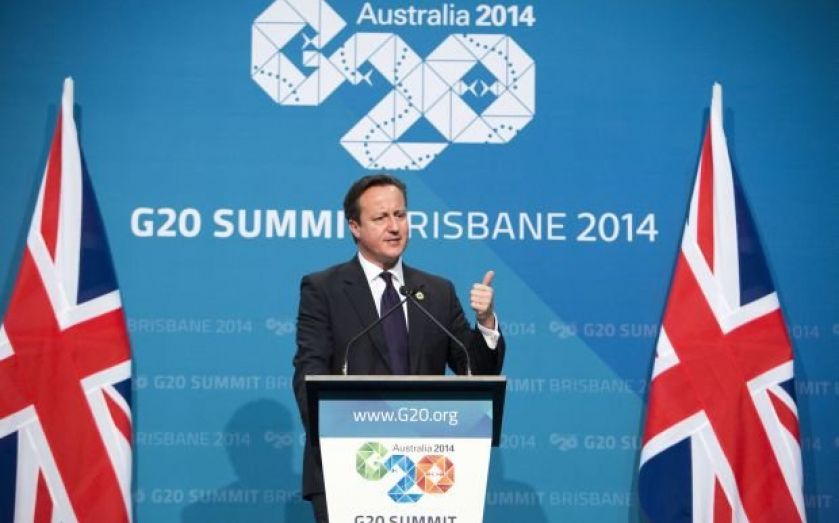David Cameron’s “red warning lights” over global economy: Five charts that sum up the Eurozone’s latest crisis

Prime Minister David Cameron has warned of "red warning lights" flashing on the "dashboard of the global economy", following this weekend's G20 summit in Brisbane.
That's particularly true of the Eurozone, which only narrowly avoided a triple-dip recession according to GDP figures published on Friday, which showed growth of 0.2 per cent in the third quarter.
So what has got Cameron worried?
Eurozone economies are still struggling
While today's figures showed the Eurozone economies grew more than expected in the third quarter, the single currency bloc is still struggling. The three biggest economies – Germany, France and Italy – have a long way to go before they achieve any meaningful growth.
At the start of this year, hopes were high as the Eurozone's star performer, Germany, grew 0.8 per cent in the first quarter. As a result its second-quarter contraction, led by weak investment and slow trade, startled investors. Many were relieved when Friday's 0.1 per cent growth rate showed it had narrowly avoided slipping into a technical recession.
France's economy has stagnated since the turn of this year after it failed to grow in the second quarter. But on Friday the Eurozone's so-called 'sick man' beat analyst expectations, posting 0.2 per cent economic growth for the third quarter.
Italy continued to limp along, with figures confirming that it had remained in recession for yet another quarter.
Exports plummeted in August
As economic uncertainty continues to put consumers off spending and discourage businesses from investing, the Eurozone becomes ever more reliant on its exports. Nonetheless, they fell three percent on an unadjusted annual basis in August.
Inflation rates still lagging
The Eurozone's persistently low inflation remains well below the European Central Bank's target of just under two per cent. Low inflation often has the effect of stopping consumers from spending, as they think that the price of goods could fall in the future.
Manufacturing growth is faltering
A sobering series of weak manufacturing data has highlighted the Eurozone's continued vulnerability.
The Markit Eurozone Manufacturing Index showed the sector nearly stagnated in October, weighed down by weak demand. With a reading of 50.6 it was barely above the neutral mark. Anything above 50 indicates there's been some growth.
In terms of the three biggest economies, Germany managed to improve its overall manufacturing performance for the month – but France and Italy continued to trail behind.
Unemployment fails to lift
The Eurozone's unemployment rate has remained sluggish throughout this year, staying almost flat. Nonetheless, until the wider economy picks up, it's unlikely there will be any significant upward movement here.